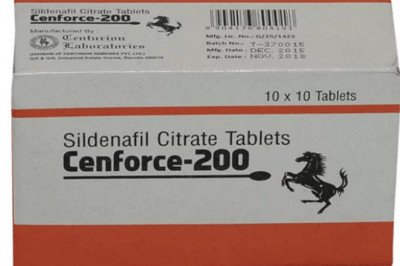views
Active Wound Care Industry Overview
The global active wound care market size was valued at USD 1,077.9 million in 2021 and is projected to expand at a compound annual growth rate (CAGR) of 4.7% from 2022 to 2030.
The market is primarily driven by technology advancements, an ageing population, difficulties associated with inadequate traditional wound healing procedures, government initiatives, and an urgent need for faster and safer chronic wound treatment. Moreover, rising prevalence of several lifestyle conditions that lead to chronic wounds, such as diabetic foot ulcer, venous leg ulcer, and pressure ulcer, is expected to drive the expansion of the market in the coming years.
Gather more insights about the market drivers, restrains and growth of the Global Active Wound Care Market
For instance, chronic wounds impact around 5.7 million people in the U.S., according to recent estimates published in NCBI. Besides, some chronic lesions, such as diabetic ulcers, can necessitate amputation. The Independent Diabetes Trust in the United Kingdom claimed in its report (2019) that each year, around 115,000 people get diabetic foot ulcers and 278,000 people are treated for venous leg ulcers in the U.K. As a result, these ulcers take an average of 200 days to cure. Thus, the rising prevalence of chronic and acute wounds is expected to increase the demand for active wound care products.
Furthermore, benefits such as reducing the length of hospital stay to minimize surgical healthcare costs, as well as a growing preference for products that improve therapeutic results, are boosting demand for active wound care products. In addition, the rising economic cost burden of chronic wounds, as well as prolonged treatment duration and the inefficiency of wound dressings and devices in treating chronic wounds, might have resulted in increased unmet needs. This presents a huge opportunity for players to enter the market for active wound care by launching new products based on regenerative technologies, to reduce overall treatment duration and cost. This, combined with effective treatment outcomes for chronic wound patients, will drive demand for innovative active wound care treatment options.
Advanced growth factors and biological skin substitutes are well-known and scientifically established in the treatment of both acute and chronic wounds. Key players are currently attempting to strengthen their global presence by introducing new bioactive products to the market for active wound care. For instance, in July 2019, Angelini ACRAF S.p.A., introduced a new active wound cleanser. Similarly, in February 2019, Axio Biosolutions released MaxioCel which contains chitosan and is intended to treat chronic wounds. Further, in January 2019, the US FDA approved Platform Wound Dressing (PWD) by Applied Tissue Technologies LLC. Besides, in April 2018, MTF Biologics (previously known as Musculoskeletal Transplant Foundation) launched AminoBand Viable Membrane at the Wound Healing Society (WHS) meeting in the U.S. As a result of such launches coupled with rising spending on research and development activities and by key players, the market is expected to witness significant growth in the near term.
The COVID-19, had a negative impact on the market for active wound care, mainly owing to the cancellation or delay of elective surgeries. However, the rising adoption of telehealth and virtual consultations has helped the market regain post-COVID-19 pandemic. For instance, the Wound Pros provides a telemedicine platform that allows wound care teams and patients to communicate securely. It has also recently introduced "RITA," a new diagnostic and wound assessment application. Furthermore, according to several research studies, telemedicine options are a cost-effective way to improve wound care outcomes, growing patient compliance, and satisfaction. In addition to this, insurance policies have also started covering telehealth. Thus, owing to the aforementioned factors, the market for active wound care is anticipated to gain a significant growth rate in the post-pandemic period.
Browse through Grand View Research's Medical Devices Industry Research Reports.
- Home Healthcare Market - The global home healthcare market size was valued at USD 336.0 billion in 2021 and is expected to expand at a compound annual growth rate (CAGR) of 7.93% from 2022 to 2030. The growing geriatric population and rising incidence of target diseases such as dementia and Alzheimer’s as well as orthopedic diseases are factors expected to fuel market growth.
- Tissue Engineering Market - The global tissue engineering market size was computed at USD 9.9 billion in 2019 and is expected to witness a CAGR of 14.2% from 2020 to 2027. The potential of tissue engineering procedures in treating irreversible damage of tissues has boosted the market growth. In addition, a rise in demand for regenerative medicine and tissue engineering procedures to treat damaged tissues further supplements this growth.
Active Wound Care Market Segmentation
Grand View Research has segmented the global active wound care market based on product, application, end-use, and region:
Active Wound Care Product Outlook (Revenue, USD Million, 2018 - 2030)
- Biomaterials
- Skin-substitutes
- Growth Factors
Active Wound Care Application Outlook (Revenue, USD Million, 2018 - 2030)
- Chronic Wounds
- Acute Wounds
Active Wound Care End-use Outlook (Revenue, USD Million, 2018 - 2030)
- Hospitals
- Specialty Clinics
- Home Healthcare
- Others
Active Wound Care Regional Outlook (Revenue, USD Million, 2018 - 2030)
- North America
- Europe
- Asia Pacific
- Latin America
- Middle East & Africa
Market Share Insights
- June 2021: Stratatech received FDA approval for its StrataGraft for treating adult patients with thermal burns. Thus, with various strategies acquired by leading players, the market is expected to impel during the forecast period.
- November 2020: UCLA researchers in collaboration with Duke University, developed a wound-healing biomaterial that could reduce scar formation and allow skin tissue to regenerate, resulting in healthier and stronger skin.
- February 2019: Axio Biosolutions launched MaxioCel, a next-generation wound care dressing made of chitosan.
Key Companies profiled:
Some prominent players in the global active wound care market include
- Smith & Nephew
- MiMedx
- Tissue Regenix
- Organogenesis Inc.
- Acell Inc.
- Integra Life Sciences
- Solsys Medical
- Osiris Therapeutics Inc.
- Cytori Therapeutics Inc.
- Human BioSciences
- Wright Medical Group N.V.
Order a free sample PDF of the Active Wound Care Market Intelligence Study, published by Grand View Research.
About Grand View Research
Grand View Research, U.S.-based market research and consulting company, provides syndicated as well as customized research reports and consulting services. Registered in California and headquartered in San Francisco, the company comprises over 425 analysts and consultants, adding more than 1200 market research reports to its vast database each year. These reports offer in-depth analysis on 46 industries across 25 major countries worldwide. With the help of an interactive market intelligence platform, Grand View Research Helps Fortune 500 companies and renowned academic institutes understand the global and regional business environment and gauge the opportunities that lie ahead.
Contact:
Sherry James
Corporate Sales Specialist, USA
Grand View Research, Inc.
Phone: 1-415-349-0058
Toll Free: 1-888-202-9519
Email: sales@grandviewresearch.com












Comments
0 comment